At De Caro and Kaplen, LLP, representing individuals with a brain injury isn’t just something that we do, it is what we do.
For over 40 years our partners Shana De Caro and Michael V. Kaplen have dedicated their lives to helping brain injury survivors in New York receive the justice and compensation they are entitled to for their injuries.
And our advocacy for brain injury survivors is not limited to the courtroom.
Shana De Caro served two terms and is immediate past Chairwoman of the board of directors of the Brain Injury Association of America. While Michael V. Kaplen served three terms as president of the Brain Injury Association of New York State and is a Professorial Lecturer in Law at the George Washington University Law School, teaching the only course on traumatic brain injury law in the nation.
When it comes to selecting a law firm for your New York brain injury case, bigger is not better. Smaller, and focused on brain injury is better and essential.
And no firm is more focused on brain injury than De Caro & Kaplen, LLP. It’s why we’re known as The Brain Injury Law Firm.
Contact us today for a free consultation.
Every 9 seconds, someone in the U.S. suffers brain trauma.
A traumatic brain injury can happen at any time, in any place, to anyone. With over 40 years experience advocating for brain injury survivors in New York State, we have a deep understanding of the complexities of brain injury law. We know that every case is unique. And unlike many brain injury lawyers, we are fully prepared to go to court to fight for the justice and compensation you deserve.
How can we help you today?
- I have a traumatic brain injury
- My spouse has a traumatic brain injury
- My child has a traumatic brain injury
- I’ve lost my sense of smell and taste
- Myself or a loved one has suffered anoxic, or hypoxic brain damage
- Myself or a loved one is suffering from traumatic epilepsy
Contact us today for a free consultation
Every brain injury is unique. At De Caro and Kaplen, LLP we understand the complexity of brain injury law and invite you to consult our personal injury law firm to discuss and review your TBI case.
You can telephone us toll free for a no obligation, free consultation at (866) 272 4652, text us at 833 227-1410, or use our contact form here.
Receive a full and fair settlement for your New York brain injury case
While it’s true that money can’t undo the brain injury you sustained from a car accident, medical malpractice, or other cause, it can help lift the financial burden of medical bills, lost wages, and other costs from your shoulders. A full and fair settlement will provide funds to use for long-term rehabilitation and medical care, replace loss of income, provide for your family, and get the assistance you need to live productively in your community.
Obtaining an adequate settlement for your injury is no easy feat, however. It calls for the help of an experienced lawyer, one who understands the complex medical and legal implications of brain damage. You’ll find that lawyer at De Caro & Kaplen, LLP. Attorneys Shana De Caro and Michael Kaplen have been handling head injury and brain injury cases for over 40 years.
It’s why we’re known as The Brain Injury Law Firm®.
You pay no legal fees unless we successfully conclude your case.
Contact us today for a free consultation.
Why you can trust De Caro & Kaplen, LLP with your brain injury lawsuit
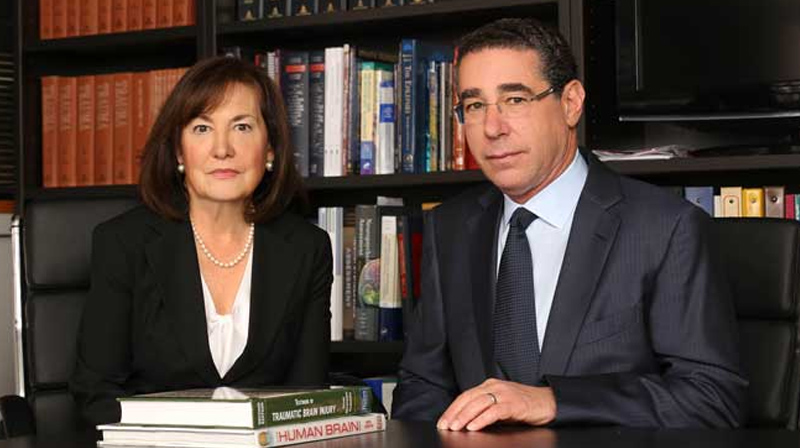
- Michael is a Professorial Lecturer in Law at the George Washington University Law School, teaching the only course on traumatic brain injury law in the nation.
- Michael has served as the chair of the New York State Traumatic Brain Injury Services Coordinating Council, and is a three-term past president of the Brain Injury Association of New York State. He has also served as the Chair of the Traumatic Brain Injury Litigation Group of the Association of Trial Lawyers of America.
- Shana De Caro served two terms and is immediate past Chairwoman of the board of directors of the Brain Injury Association of America, is Past Chair of the Traumatic Brain Injury Litigation Group of the American Association for Justice, and was elected secretary and board member of the Civil Justice Foundation.
- Our New York attorneys co-author the traumatic brain injury column for the distinguished New York Law Journal.
Brain injury lawsuit verdicts and settlements
- $8,500,000 award against a truck driver during trial for brain injuries sustained by our client, who was driving a car struck by the negligent driver.
- $8,000,000 medical malpractice settlement for an anaesthesia error resulting in permanent brain damage for our client.
- $8,000,000 pre-trial medical malpractice settlement for failure to diagnose and properly treat stroke for our client, who had been complaining of severe headaches.
- $6,500,000 pre-trial medical malpractice settlement for failure to treat atrial fibrillation, resulting in stroke.
- $5,350,000 for brain injuries caused by a fall in hospital because of hospital personnel’s failure to monitor and safeguard a patient.
- $3,900,000 jury verdict for medical malpractice leading to the death of a mother following the delivery of her child, as a result of uncontrolled bleeding.
- $3,500,000 for traumatic brain injury sustained by a college student against university which directed students to drive themselves to an athletic practice in hazardous weather conditions, in violation of safety standards and university rules, resulting in motor vehicle skidding on an icy roadway and colliding with a truck.
- $2,100,000 settlement for a skull fracture to an infant automobile passenger, which occurred when the vehicle was rear-ended by a truck.
- $2,000,000 pre-trial settlement for a vehicle accident caused by a negligent driver who struck our client’s vehicle, resulting in a concussion and post-concussion syndrome.
- $2,000,000 jury verdict for a taxi passenger’s Parkinson’s disease, caused by the collision between a bus and the taxi.
- $1,900,000 settlement for a motor vehicle accident caused by improper maintenance of brakes in a truck, resulting in a head-on collision and closed-head brain damage for our client.
- $1,500,000 medical malpractice settlement for a hospital’s failure to treat a sinus infection, resulting in seizure disorder.
How common are traumatic brain injuries in the United States?
Brain injuries are at epidemic levels in the United States, and are a public health emergency.
- On average, one individual in the United States suffers a brain injury every 9 seconds
- In 1999, the CDC reported that over 5.3 million Americans were living with a long term disability caused by brain injury. 24 years later, this figure is likely to be much higher.
- In 2018 there were more than 223,000 TBI related hospitalizations in the United States.
- Brain injury is the leading cause of death and disability in children and adolescents in the United States.
In a recent study conducted by the CDC, 27 percent of adults reported having sustained a concussion in their lifetime.
And concussions are brain injuries. There is no such thing as a mild concussion.
What are the most common causes of traumatic brain injuries in the United States?
According to the CDC, falls are the leading cause of traumatic brain injury in the United States, accounting for 47% of documented cases.
Other common causes of TBI include:
- Blunt impacts (e.g. being struck by or against a moving or stationary object) – 15%
- Vehicle accidents – 14%
- Self harm and assaults – 10%
De Caro and Kaplen can assist in all traumatic brain injury cases, that are a result of another’s negligence.
What are the most common signs and symptoms of traumatic brain injury?
Traumatic brain injury is often referred to as “the invisible injury”, since signs and symptoms may not always be apparent to an outside observer.
Additionally, individuals with a brain injury may find it difficult to communicate how they feel.
But while recognizing not all of these may be clear and obvious in isolation, some of the most common signs and symptoms of a TBI include:
- Chronic low-grade headaches
- Having trouble remembering, concentrating, and solving problems
- Difficulty with reading and/or writing
- Vision changes or hallucinations
- Changes in sexual drive or function
- Mood changes; feelings of sadness, irritability, anxiety
- Slurred speech or loss of ability to speak
- Poor control of voluntary movements
- Difficulty recognizing faces and visually locating objects
- Unusually aggressive behavior
- Difficulty with hand-eye coordination, impaired spatial orientation
- Impaired gross and fine motor coordination
- Tremors, dizziness, and nausea
How long does it take to recover from a traumatic brain injury?
Every brain injury is unique. Which means recovery will vary from injury-to-injury and person-to-person.
And while some may refer to a concussion as a “mild brain injury”, we do not. There is no such thing as a mild brain injury.
Indeed, the medical profession continues to classify TBI cases as “mild”, “moderate”, or “severe” (terms derived from the Glasgow coma scale) – an outdated and inappropriate way of categorizing an injury that can vary wildly in severity and outcome. There have been recent calls to improve this classification, but progress is frustratingly slow.
It is therefore critical that you, your family member, or your loved one receive the appropriate, ongoing care (both medical, financial and otherwise) for your specific needs.
And costs can quickly mount up. Which is why, when a third party is responsible for your injury, you should retain a specialist brain injury lawyer to ensure you receive all compensation you are entitled to.
Is there a time limit for filing a brain injury case?
The time limit for filing your brain injury case in New York State will depend on the cause of your injury.
You can refer to the Statute of Limitations on nycourts.gov here.
Areas we serve
Our brain injury attorneys serve the entire State of New York including New York City, the Bronx, Brooklyn, Manhattan, Staten Island and Queens. We also serve Nassau and Suffolk, Rockland, Westchester Counties, Albany, Buffalo, Rochester and Syracuse and surrounding areas.
Our New York City office is located at:
228 E 45th St Suite 1100,
New York,
NY 10017
Representing a high-functioning TBI client

The following slides are taken from a presentation given by De Caro & Kaplen partner Shana De Caro to the National College of Advocacy, American Association for Justice in 2023.
While the presentation focuses on representing a high-functioning brain injury survivor, we believe that the information within gives a good overview of the complexity of brain injury, the many factors your brain injury attorney must consider, and the processes they must follow when collecting evidence and representing you or your loved one in court.
Brain injury clients should be presented not as victims, but as victors

To be successful In the trial of a traumatic brain injury case for a client who is high functioning, you must present your client not as a victim but as a victor. Your theme needs to emphasize the struggle your client has endured and continues to endure to regain pre-morbid level of function.
For someone who was and is high functioning, even a subtle injury can have devastating effects and significant impairments. These may not be readily discernible.
Perhaps such an injury would not present as great an impairment to someone who had never functioned at that level.
Recommended reading for a TBI case involving a high-functioning individual

In preparing your themes for a TBI case involving a high functioning individual, I suggest you read Jesse Wilson’s text on witness preparation and telling the winning story. Also, David Ball and Artemis Malekpour’s excellent, Damages Evolving is an essential read.
They go beyond templates with examples you can use to solve the problems in your cases. They share reasoning why their solutions work, so you can take these strategies and tailor them to your individual client and case.
You need to begin this process from the moment you are retained.
A drive to “get on with it”

The only way to understand the difficulties and impairments your client still experiences, is to talk with him/her and most importantly listen carefully.
This takes time, attention to detail, and nuance.
Invariably these individuals are driven to regain their pre-morbid level of function – to return to their careers, social life, community involvement, and “get on with it”. These are not the type of individuals who succumb to their disabilities.
It takes time to establish trust and rapport for them to finally admit some of their difficulties. They have a tendency to want to muscle through and minimize the extent of their injuries. Obviously, this does not accurately portray their difficulties, and is counter-productive in terms of proving their case.
Either you are fully recovered, or you are not

You need to create a theme that fits your client and your case. We begin with who your client was before their injury, and then detail the journey taken to recover the threads of their lives.
This is an ongoing journey without a positive resolution. It is not like mending a fractured bone. It is the day-to-day challenges, trying to keep up, maintain appearances and regain the level of performance they previously exhibited.
If your client is not the same person he or she was before the traumatic event, then he/she is not fully recovered. This applies to the full spectrum of brain injury, mild, moderate, and severe. Because, we have seen in our practice clients who were initially in a coma and now are back to work, or in school, who have graduated from either high school or college and are still experiencing challenges.
We have also worked with clients who initially sustained a concussion, with no loss of consciousness and are still experiencing challenges, years later.
There is no one model – it is very idiosyncratic. As the medical profession says, “if you have seen one brain injury, you have seen one brain injury.”
The importance of talking and listening

The only way to understand the difficulties and impairments your client still experiences, is to talk with them repeatedly.
This takes time.
Your office may not be the best place to have these conversations. The office, like the setting for neuropsychological testing, is an artificial environment and cannot be used to gauge the issues and difficulties your client is experiencing in the real world, in day-to-day life.
You need to speak with your client in their home. In their own milieu. Where they feel comfortable.
Begin to peel back the layers of their usual day and their lives to reveal how he or she as a unique individual, is no longer who they were before the injury and is just trying to come to terms with who they are now.
They continue to struggle, to reconcile who they were, and who they are.
There are some attorneys who analogize this to a wrongful death case. Your client emerges from the initial injury as a different person.
Psychologists believe until they can accept their new identify, they will continue to feel this loss, which is a roadblock to recovery. Your client continues to strive to manage his/her life at an unobtainable level.
The importance of gathering information from family, friends, and co-workers

Sometimes, your client is not the best historian, and this information needs to be obtained through lengthy and detailed conversations with family, friends, and co-workers. Clues may be found in many different places.
Before and after witnesses are vital in a TBI case

The consequences of this injury in a high functioning individual are not established through imaging or neuro-psychological testimony.
Before and after witnesses are vital to presenting evidence of the struggles and impairments of a high functioning individual following a traumatic brain injury.
These people knew your client before the traumatic event, before they sustained a brain injury and can also provide the jury with essential observations of your client’s behavior, strengths, and weaknesses after their injury. They can tell stories that illustrate pre-injury strengths and post-injury deficits.
This essential witness testimony cannot be conclusory. Lay the foundation and establish the witness’s opportunity to observe your client.
How well did they know your client? A comparison before and after of shared activities.
Make it particular, anecdotes can be especially effective. Descriptions of organizational, parental, and household skills; temperament, mood swings, emotional well-being, and fatigue. Novel complaints and unusual behavior after the injury.
These witnesses often describe walking on eggshells to avoid causing stress or provoking outbursts when they are with your client, or friends who now distance themselves because of your client’s disinhibition or the inability to get along with others.
Maybe your client has confided their frustrations or what they have to do to just get through their work or through their day to these close friends and colleagues.
All this must be explored.
A brain injury is a life-changing event

Their dreams and aspirations must be altered to accommodate who they are now.
What they can accomplish now, and what they can achieve in the future. What assistance they need from co-workers.
Workplace accommodations may be necessary. How this all affects them.
But once they feel comfortable with you, which will take many sessions, they can begin to reveal how they have changed, the new difficulties they confront, what they do to accommodate these new needs, the crutches they use, the people they must rely on in a completely different way.
The medical profession continues to (incorrectly) refer to certain brain injuries as “mild”

The term “mild” brain injury, which I intensely dislike, is nevertheless a term I must acknowledge, as it is used ubiquitously.
Mild is not mild for the person living it.
Tommy Malone defined a mild brain injury as one that affects someone else’s brain.
In May the American Congress of Rehabilitation Medicine published an on-line the Diagnostic Criteria for mild TBI. They use the term mild in this most recent definition of concussion.
The authors state, however, the diagnostic criteria does not address clinical outcome. This is an important caveat and omission.
Long-term outcomes following traumatic brain injury

Over 53% of patients with mild TBI presenting to US Level 1 trauma centers reported persistent, injury-related life difficulties at one year post injury, in a large-scale Track-TBI study, reported in the journal Neurology.
These difficulties included loss of independence, reduced capacity to work, impairment in social and leisure functioning, and family disruption.
The study authors concluded, “The term mild TBI misrepresents the immediate and long-term burden of TBI and other occurring factors experienced by this population.”
Focus on the long-term outcome of TBI is essential

We cannot focus on the initial presentation, with definitions, or the lack of neuro radiological evidence of structural brain damage, but must concentrate on the long-term prognosis and outcome.
Can MRIs, CAT scans, and EEGs detect mild TBI?
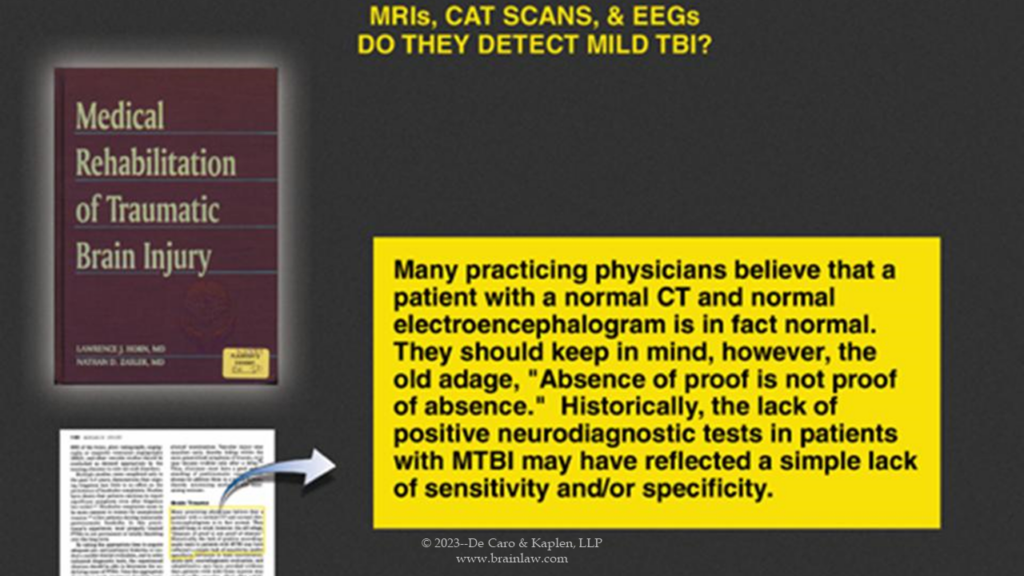
Absence of proof is not proof of absence. Your experts must be prepared to explain this dilemma, and you must be prepared with medical literature to support their testimony, and to confront the defense experts.
Brain injury is a lifelong journey
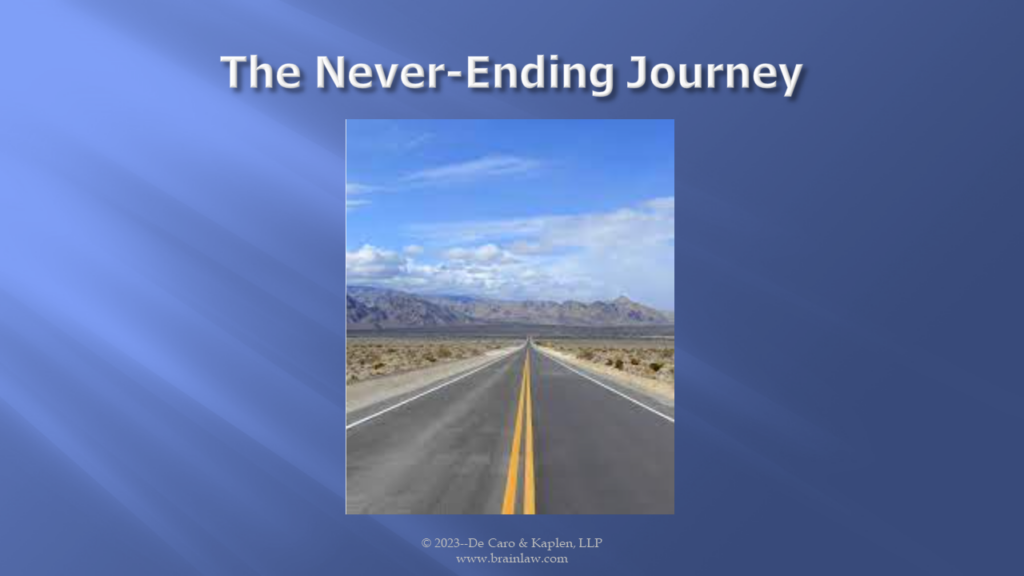
Recovery is not a destination. It is a process that will continue and evolve throughout your client’s life, as they face new and different challenges at home, in the community, and at work.
Brain damage is not a static event, it is a lifelong journey.
Quality of life issues after brain injury
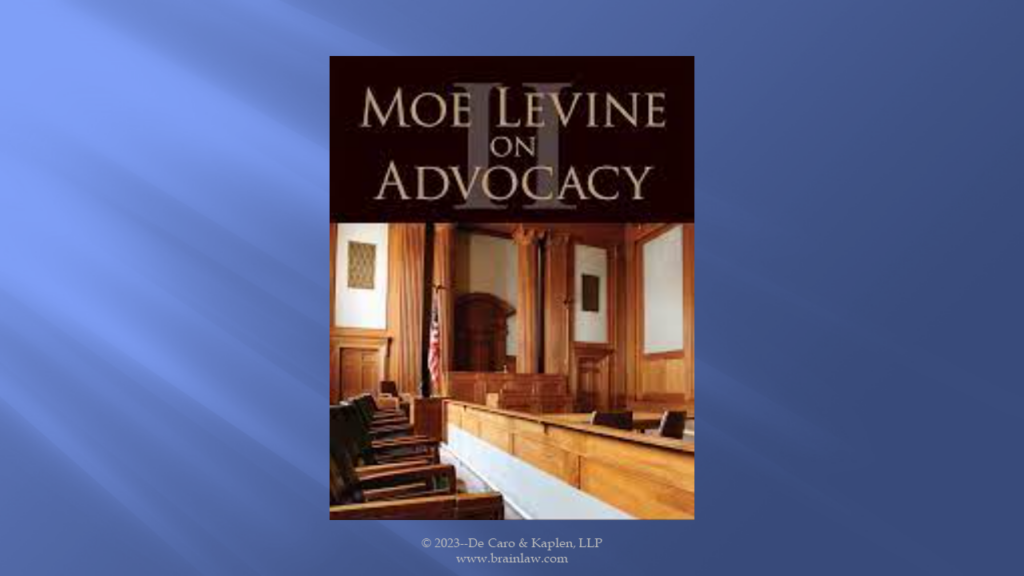
Quality of life issues present important considerations and themes in the trial of high functioning individuals.
Moe Levine pointedly stated, “It’s not what they took, it’s what they left behind.”
Moe Levine never presented his client as a victim. Levine’s “whole man” concept asks the jury to evaluate the whole person.
You cannot injure just one part of an individual without affecting the entire person. Following an injury, the person changes and becomes a totally different person.
Brain injuries can be invisible to outside observers

Most of the effects of traumatic brain injury are well below the surface.
Brain injury is invisible.
Individuals suffering from a traumatic brain injury may have an array of physical, cognitive, behavioral, and/or emotional signs, and symptoms.
In evaluating the long-term consequences of a brain injury, look beneath the surface. The effects of a similar injury on two people can be dramatically different, depending on many other factors, including pre-morbid conditions.
This may be challenging to explain to a jury who still sees an individual functioning at a higher level than most others, even with these impairments.
Frequent persistent symptoms following traumatic brain injury
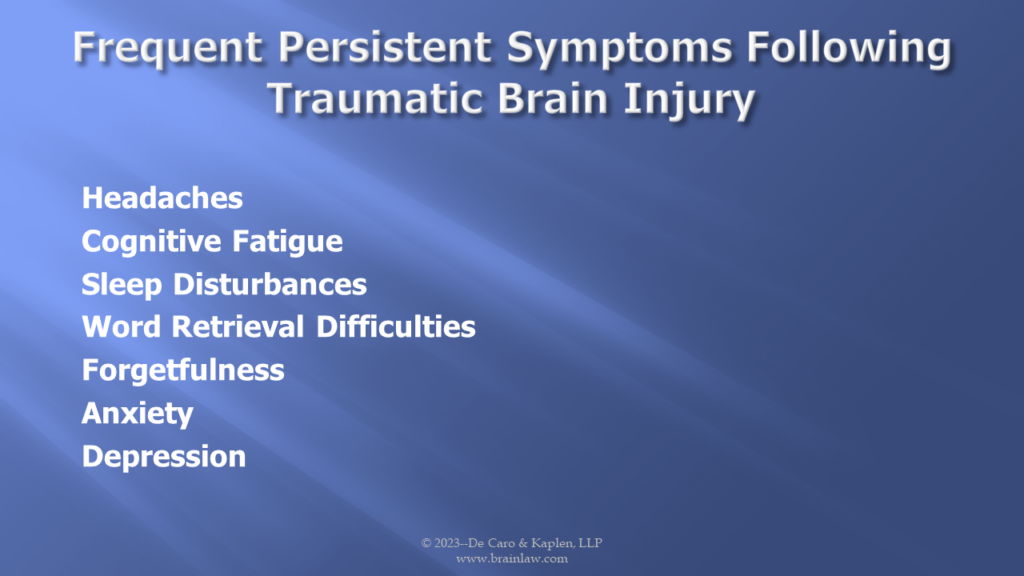
Although an individual may return to what may seem like normal functioning following a traumatic brain injury, residual symptoms impairing their life persist.
While these individuals may be high functioning, they may still suffer the lingering impact of their injury which affects the quality of their lives.
The most frequent of these symptoms include chronic headaches, cognitive fatigue, sleep disturbances, word retrieval difficulties, forgetfulness, and depression.
They must come to terms with the fact they are no longer the person they once were.
What they formerly could accomplish in a week, or a day or an hour has diminished, and left them with exhaustion and despair.
The impact of a mild traumatic brain injury may be magnified in high functioning individuals

In high functioning individuals, the impact of a mild traumatic brain injury may be magnified.
These individuals are more aware of their subtle cognitive and emotional losses than other individuals. They continue to be frustrated and strive to overcome deficits, frequently resulting in anxiety and depression.
Just think of the daily functions you perform as an attorney. Reading, analyzing, concentrating, multi-tasking, prioritizing, social interactions, management decisions can all be subtly impacted by a mild brain injury.
These individuals will never be satisfied with the status quo. They always attempt to achieve more, but it may be impossible to overcome the affect of these roadblocks.
Often their emotional instability, their anxiety and depression, may have a greater impact on their ability to function, than their cognitive impairments.
Emotional and behavioral issues after brain injury
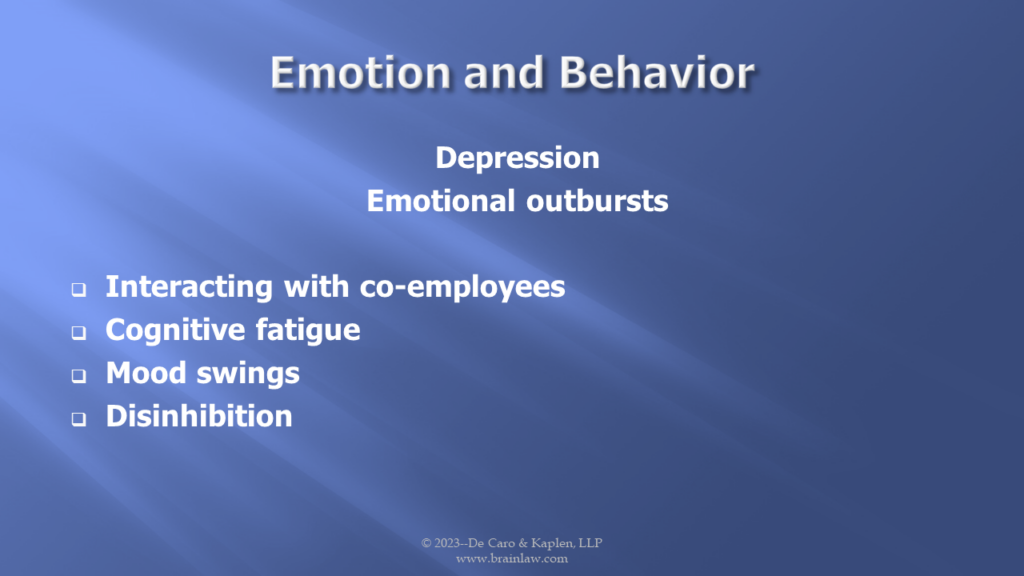
Anxiety and depression affect more than the manner in which your client performs work tasks.
These behavioral impairments impact others as well. Socialization at work or in other settings may be affected because your client is nasty, belligerent, argumentative, and just unpleasant.
They may make inappropriate comments and exhibit extreme emotional reactions.
Economic consequences of traumatic brain injury
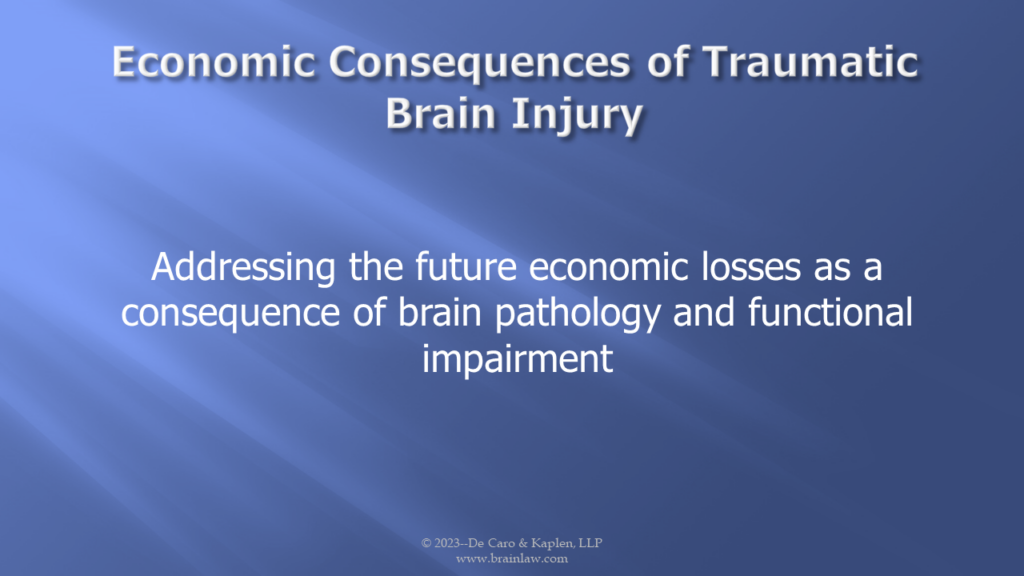
The economic consequences of a brain injury in a high functioning individual can be more significant than in other cases.
This may be counter intuitive because your client has returned to work and seems to be able to perform as before.
We recently represented an individual involved in a high-speed vehicle crash. He sustained a hip fracture and other orthopedic injuries which resulted in a good recovery, and he returned to work.
He was a college graduate with a degree in business administration and worked for a bank.
Although his medical providers concentrated on rehabilitation of his orthopedic injuries, careful questioning revealed he also sustained a concussion.
From talking to co-workers, we learned he now exhibited anti-social behavior. He was belligerent and short-tempered.
His co-workers refrained from socializing with him and would no longer sit with him during lunch. Other workers explained he needed constant direction, and it took longer for him to complete his assigned tasks.
Examining the economic consequences, we were concerned because his income was the same before and after the occurrence, so how to prove economic loss?
Vocational economists refocused our analysis, not on the present, but the economic impact his brain injury would have on future job growth, risk of losing his present position, and the difficulties he would have in obtaining new employment if he lost his job.
Practical reasons for focusing on the economic impact of brain injury
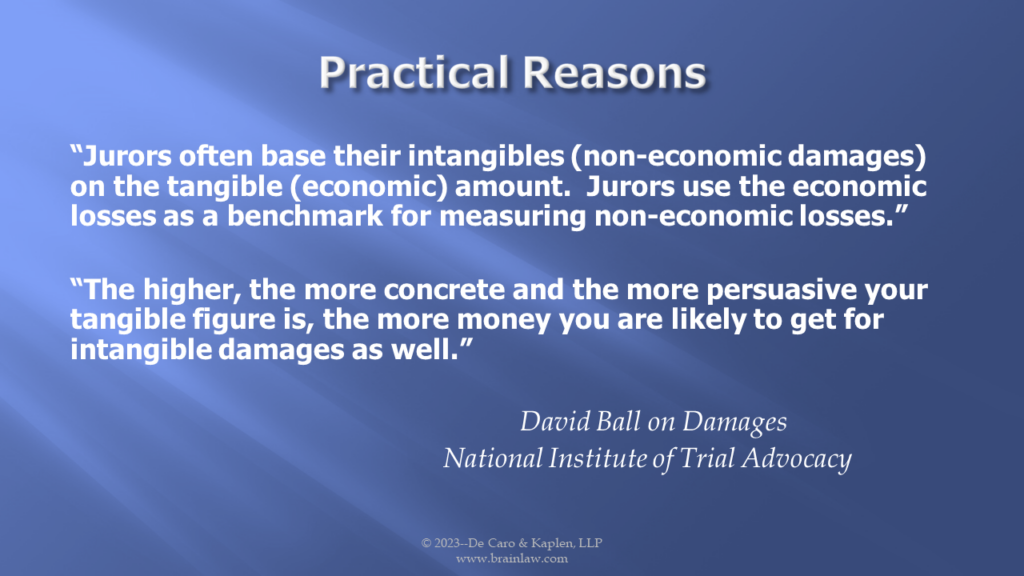
David Ball articulates the importance of economic damages as a benchmark for jurors to evaluate the magnitude of the harms and losses to your client.
Other reasons for focusing on economic loss
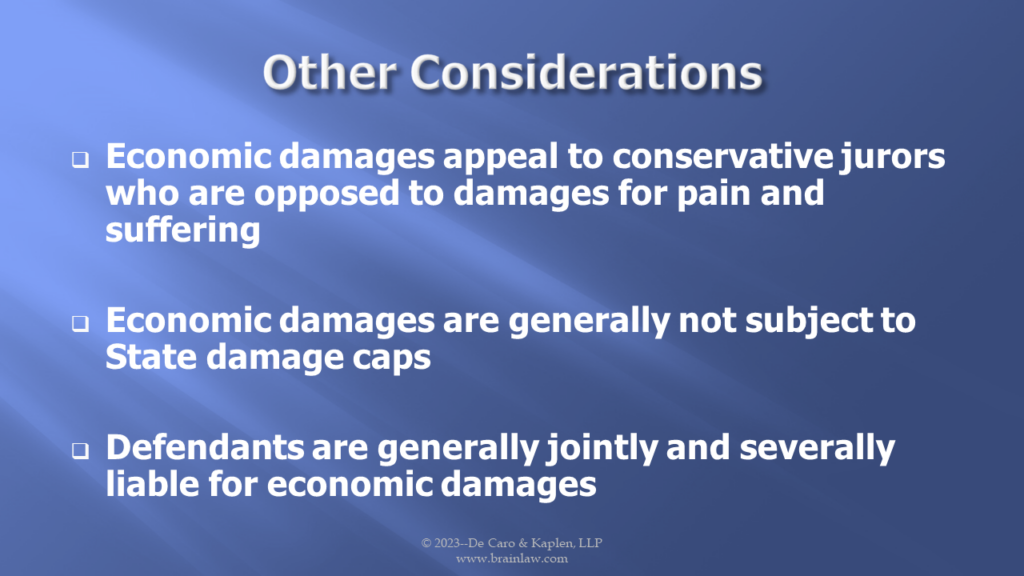
There are other important reasons not to ignore proof of economic loss.
Vocational economic analysis
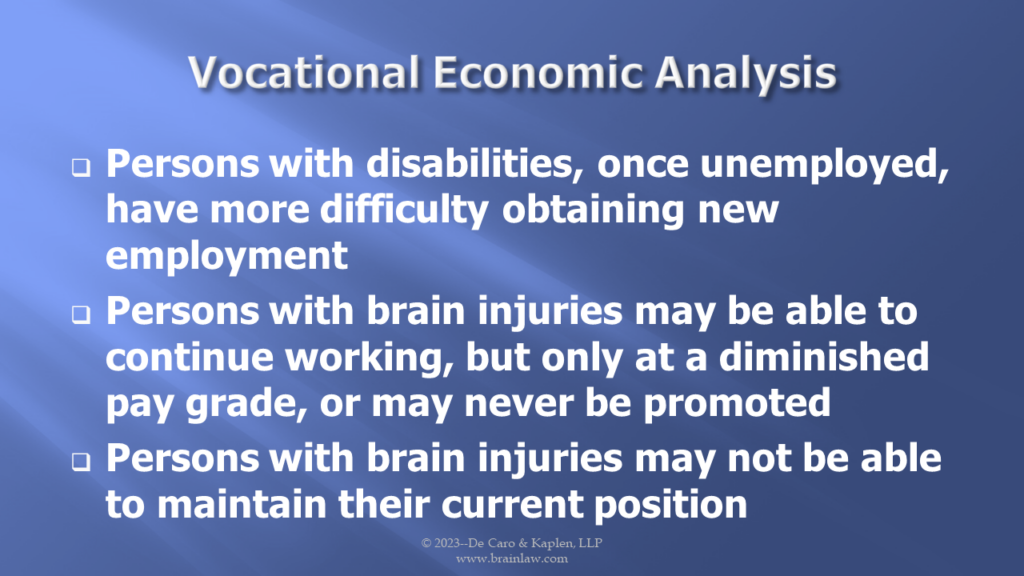
And important economic theories used to evaluate the future economic loss for all individuals with a disability. Individuals with brain injuries may not be able to maintain their current employment.
Persons with disabilities, once unemployed, have more difficulty obtaining new employment, may only be able to continue at a diminished pay grade, or may never be promoted.
The vocational economic impact of brain injury differs for each individual
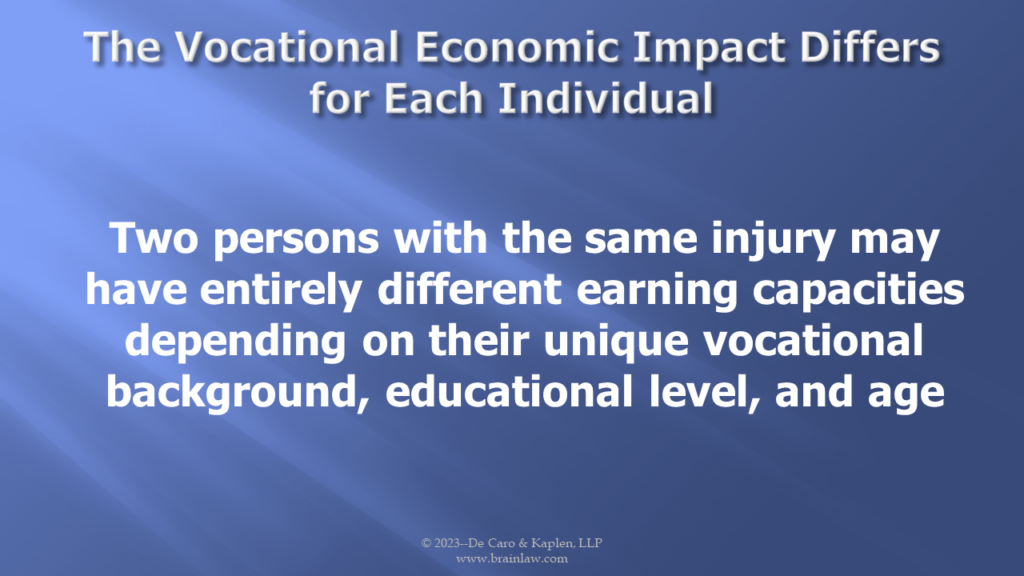
How is the economic impact different?
Because of the nature of their pre-morbid intelligence, education, and careers, the economic impact of subtle brain damage may be significantly greater in these individuals.
All of these factors: the inability to retain their current position, to be promoted, or to obtain new employment, must be taken into account by the economist in calculating economic damages.
Issues to consider
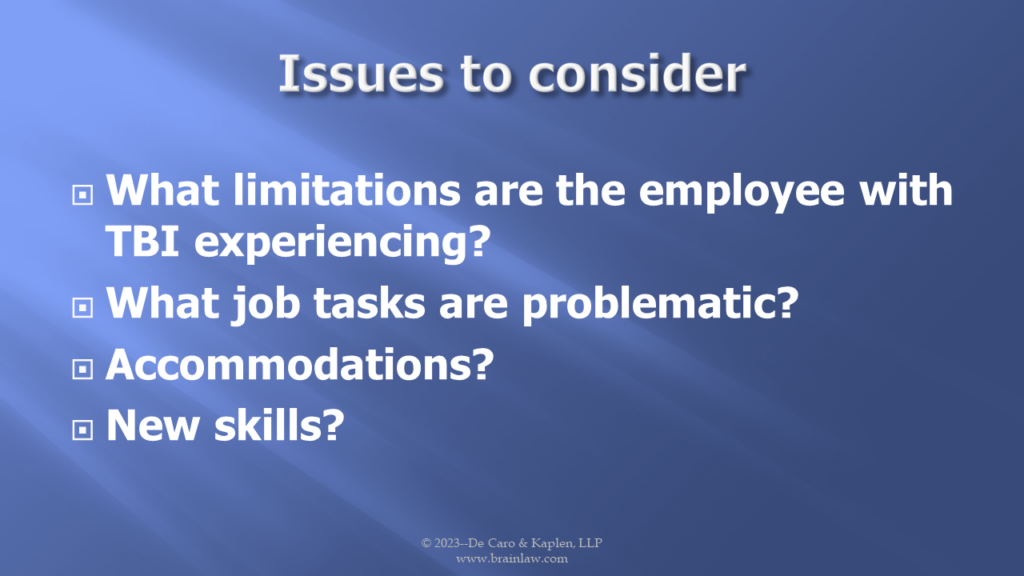
New tasks, new technology, new setting.
There are many accommodations your client may need, including reduction in the work week, work hours, and time in the office.
Perhaps they need assistance keeping track of information for tasks they once completed independently. Perhaps they need an increased level of supervision.
What happens if they themselves are the supervisor? Do they need written instructions to follow, written performance expectations, extended deadlines, updated training, review of technology, and programming policy changes? Do they need breaks during the course of the day?
These are all issues that need to be addressed.
TBI interrupts career cycle
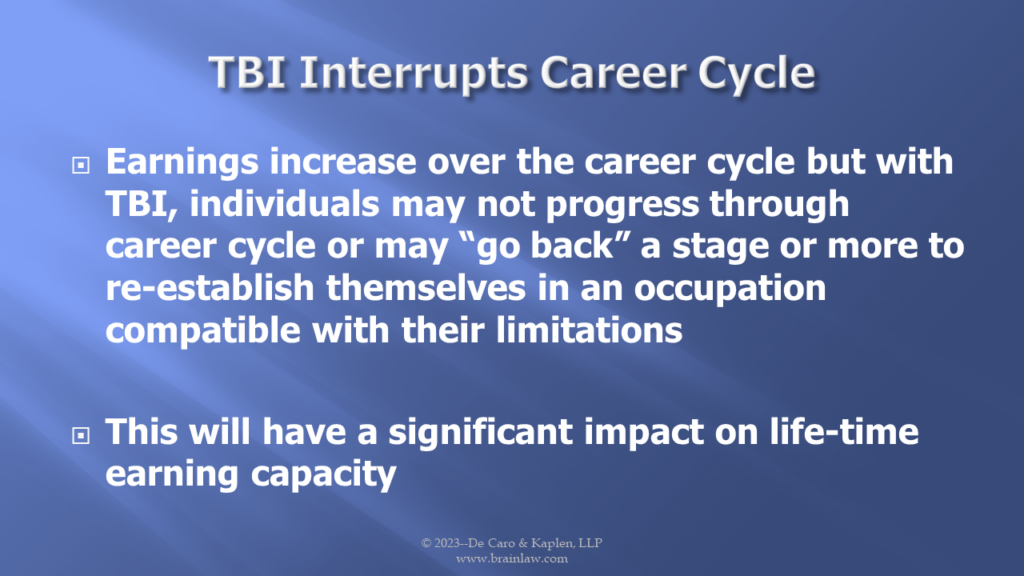
They stagnate and cannot possibly pursue their prior career trajectory due to the consequences of their injury.
Suppose they are consultants and must travel to different sites and perform their work, how is that impacted?
The higher the level of function, the more difficult it is to provide the necessary support they might need.
What a CEO must do in a day is vastly different than what their administrative assistant does, especially as the assistant may receive guidance and direction.
How can they be promoted or challenged with more difficult assignments if they need assistance to do what they previously performed independently?
Suppose their career requires creativity or ingenuity – how are these skills or abilities impacted?
The impact of brain injury on multi-tasking
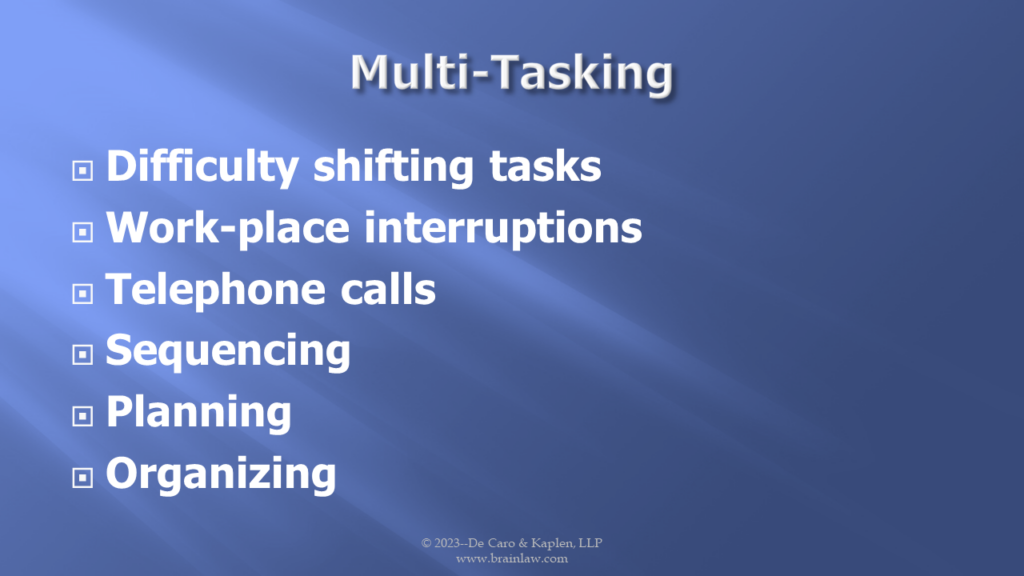
Multi-tasking is the cognitive domain most likely to be impacted in the high functioning individual with a brain injury.
Are they able to make transitions from one task to another?
The ability to multi-task is a defining characteristic of success for a high functioning individual.
How does this affect their ability to perform, succeed, and progress in their careers?
What brain injury survivors want you to know
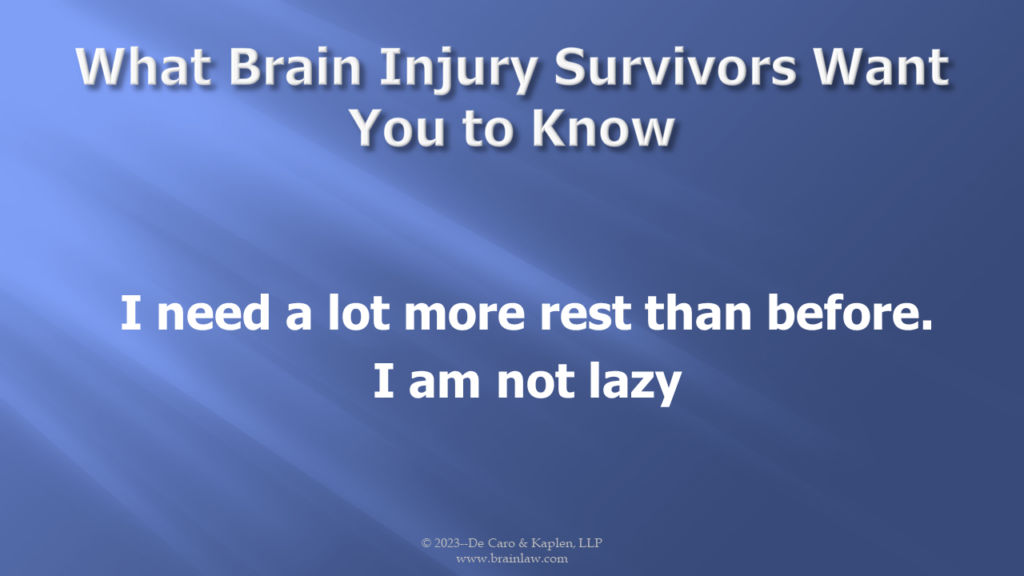
A continual source of frustration for these individuals is the inability of family, friends, and co-workers to understand their impairments, because they look and sound fine on the surface.
Brain fatigue is a common long-term complaint following recovery from a brain injury.
These difficult concepts must be explained, because they seem to be functioning at the same level as they had before their injury.

Rehabilitation continues long after formal therapy has ended.
Even though an individual may look better, they are still practicing and using coping skills to enable them to function.
You need to discuss what coping mechanisms they use to assist them to complete tasks they had formerly accomplished independently.
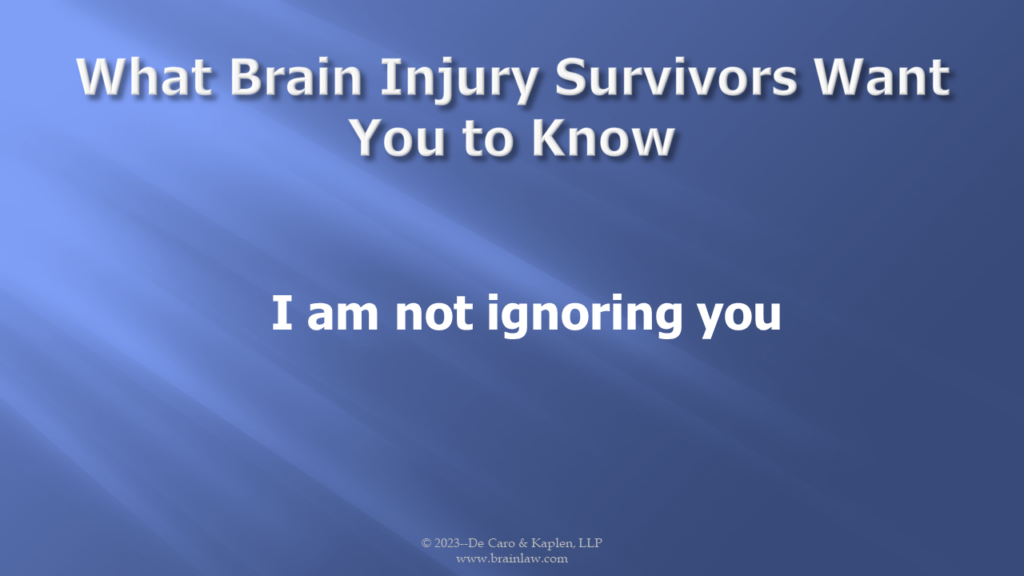
A brain injury survivor may have difficulty following and participating in conversations. This is especially true in multi-party conversations, because this may overload their capacity.

Crowds, confusion, and loud noises may quickly overload the brain of a brain injury survivor.
Limiting exposure and avoiding social gatherings is a coping strategy that needs to be respected.
Depending on their occupation, this can be problematic as many business interactions occur in quasi-social settings.
A brain injury survivor may just need to take a break. They may need to stop and re-organize or just have a period of silence.
Risks of developing co-morbidities following TBI
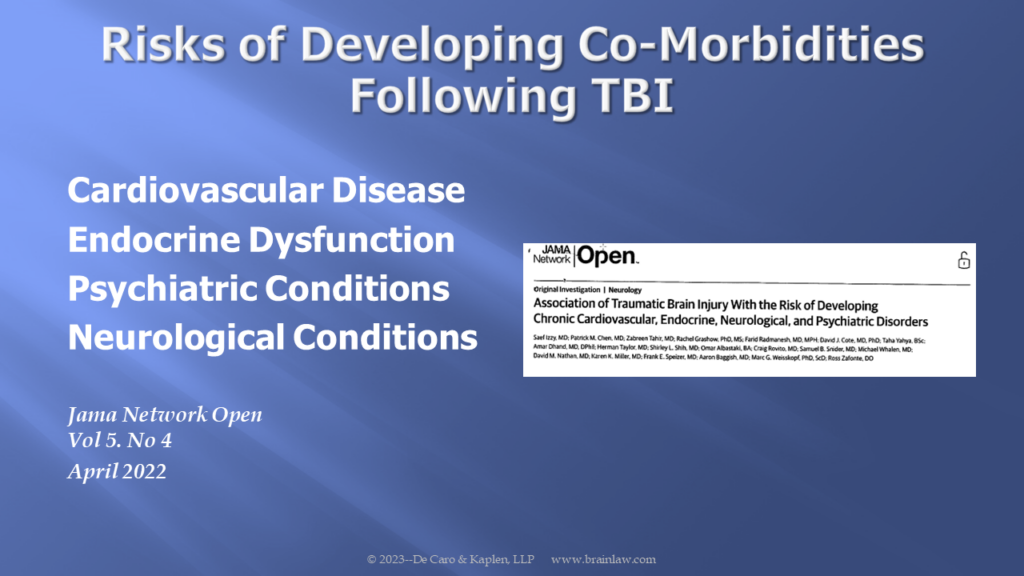
Chronic physical, cognitive, behavioral, and emotional consequences of a traumatic brain injury are well recognized but are not your only consideration.
Brain Injury is increasingly being recognized as a chronic medical condition. A recent long-term study examined the association between concussion and the risk of chronic medical and behavioral conditions with a 10-year follow up after the initial injury.
They found patients ,experiencing a concussion without pre-existing comorbidities, were at increased risk of developing numerous chronic conditions including cardiovascular disease, hypertension, obesity, coronary heart diseases, endocrine diseases including hypothyroidism, pituitary dysfunction, diabetes and adrenal insufficiency, as well as mental health conditions including chronic anxiety and depression.
Some of these are a direct result of a TBI and others, are a result of behavioral and lifestyle changes, including physical inactivity, unhealthy diet, social isolation, alcoholism, and drug use.
Pay attention to social media use

You must be concerned what your client posts on social media. These posts can undermine your case and you do not want to be surprised at trial.
In the recent trial of actress Gwyneth Paltrow, the plaintiff claimed he sustained a traumatic brain injury after the two collided on a ski slope in Utah.
Plaintiff, Terry Sanderson, was a 76-year-old retired optometrist. A neuropsychologist testified about the effect on his mental health, how he had “deteriorated” after the collision and stopped many of the activities he had engaged in prior to the incident.
To rebut this, the defense showed post-accident pictures of the plaintiff riding a camel in Morocco, hiking to Machu Picchu in Peru, and taking a cross-country European trip.
It’s impossible to evaluate and analyze the affect of this evidence on the jury’s determination.
What happens next?

Individuals with a brain injury struggle with questions: Who am I now? What am I? What Will Happen Next?
These are the existential questions and issues that need to be explored in the trial of a traumatic brain injury case on behalf of a high functioning individual.
We’re ready to assist you with your New York brain injury case
Don’t wait another day to pursue justice for yourself and your family. Contact De Caro & Kaplen, LLP today to discuss your legal right to obtain compensation.
Call us on (866) 272 4652, text us at 833 227-1410, or use the contact form below to get in touch with our attorneys.